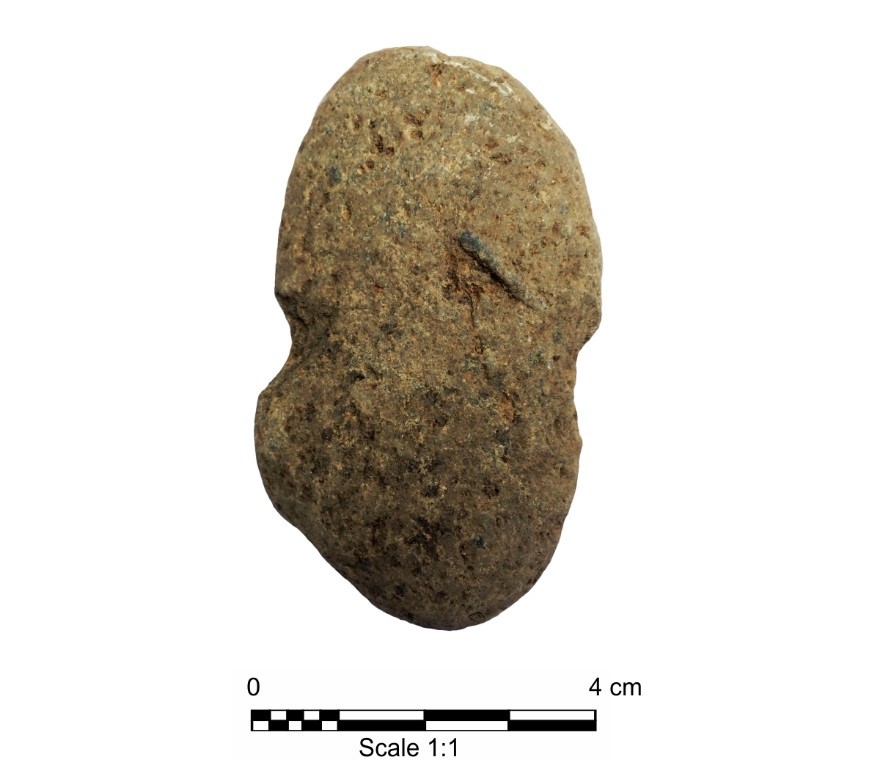Archaeologists are story tellers that use (hopefully!) scientific methods to assist in chronicling past lives. Context is one of the most powerful tools at our disposal, and is a concept so basic that it is often overlooked. This installment of Dig It illustrates this idea using an example from the southern interior of BC. Future installments will delve deeper into aspects such as stratigraphy, stylistic dating and radiometric dating.
Imagine I have passed to you the object in the photo and asked you to discuss it. Upon examination, you see that it is a thin, flat, sedimentary rock, about 4 cm by 8 cm, with what appears to be two notches removed from the sides: hardly a ground-shaking discovery. The only real clue is that, since I am an archaeologist from the southern interior of BC, you think it might be something more than “just another rock.” In isolation, this object does not provide very much information to tie a story to. The story so far, “a little flat rock that might be an artifact” is hardly riveting, is it?
However, when we place this artifact in the context of other, similar looking ones found in archaeological sites around the southern interior, and combine it with information gleaned from ethnographic accounts and traditional First Nations knowledge, it looks like it might have been used to weigh down the bottom edge of fishing nets. Now we have the first beginnings of a story! Still, “someone, somewhere, at some time, might have used this rock for fishing,” is a rather bland tale.
We now add more layers of information about this artifact. It was found at an archaeological site overlooking a lake in the southern interior of BC where fish, including Kokanee salmon, lived. It was found in association with over forty very similar artifacts, all at about the same depth, scattered in a linear fashion for about 4 m, perhaps showing where a net was left hanging to dry. In this site very little fish bone was found, even though large amounts of deer bone were recovered, suggesting that bone preservation would be good. The only other obviously fishing-related artifact was a small antler harpoon point in the second photograph, recovered from a nearby archaeological site, also overlooking the lake.
Now, we are getting somewhere! We have the foundation of a pretty good story, but the question “where are all the fish?” still puzzles us. One of the great privileges that we, as archaeologists, have in Canada, is that we get to work within a complex web of knowledge regarding past lives that extends from living memory, far into the past. Tapping into this treasure of information (through research and talking to local First Nations community members), we find the final keys to the puzzle. First, this area is specifically known as a fishing location. Second, the local cultural practice was, and still is, to return the bones of fish back to the water once processed.
Though artifacts are interesting objects in and of themselves, when considered in isolation, they only take us a short way towards understanding the past. This is the underlying reason why it is so important to leave artifacts where they are observed. Without recording the context, archaeologists are not story tellers, merely treasure hunters.



